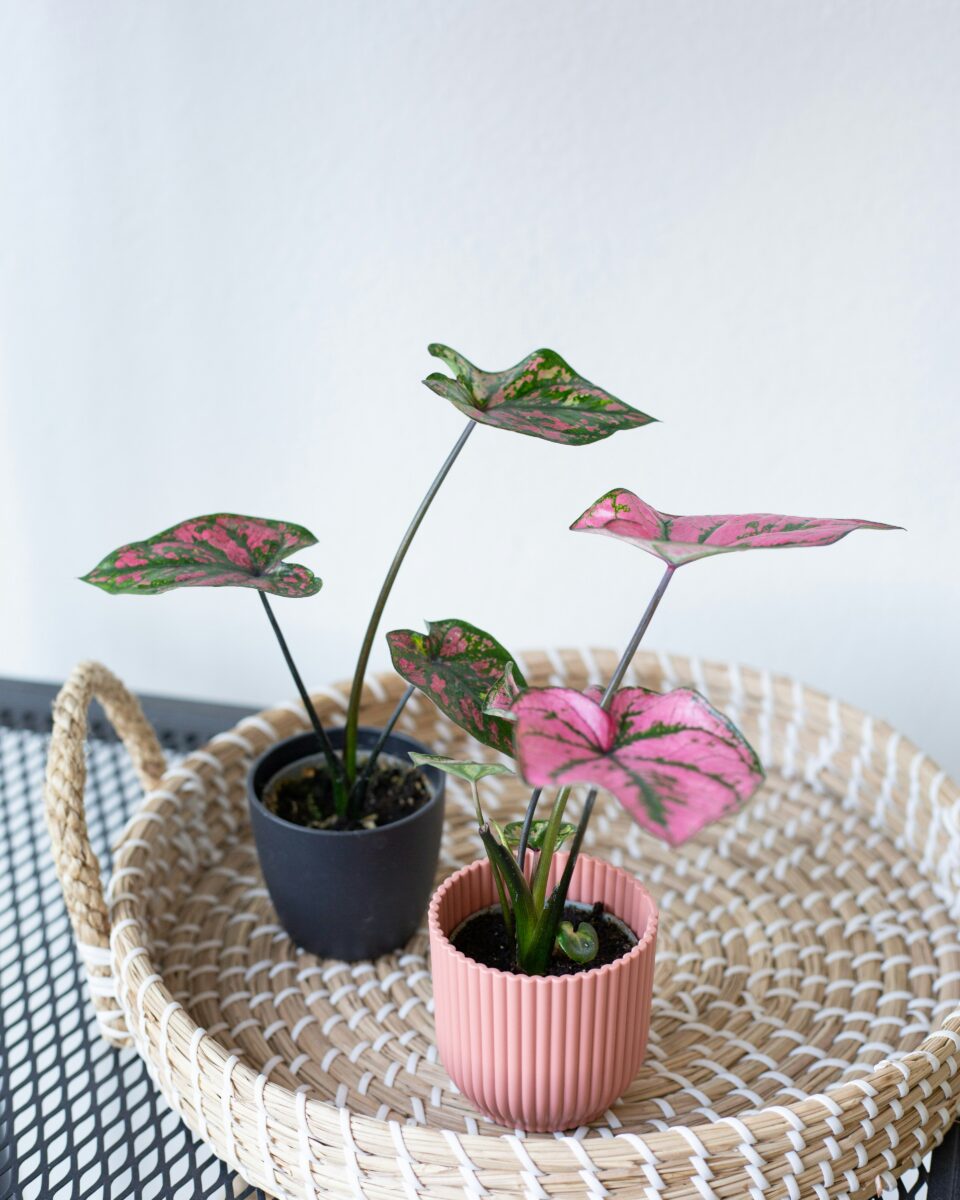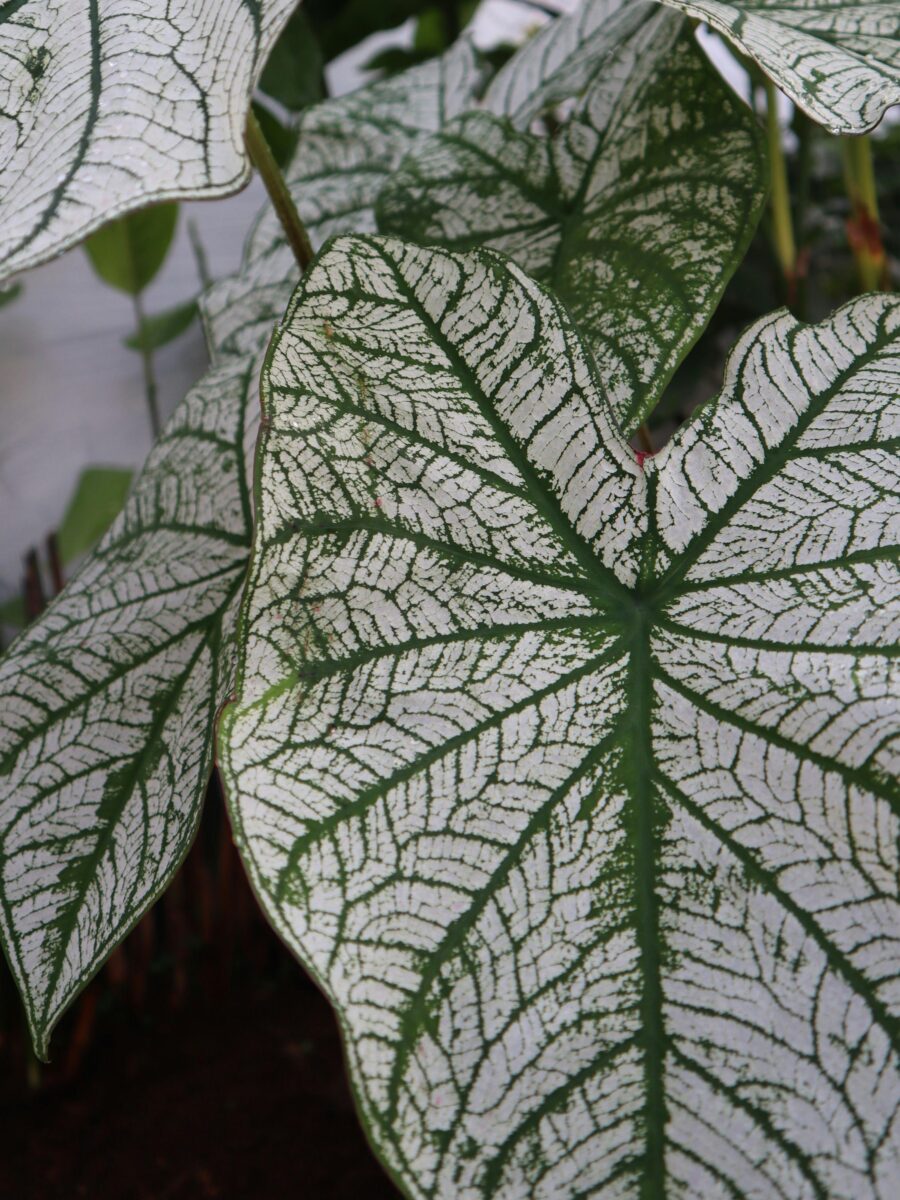



Frequently Asked Questions
Caladiums are tropical plants prized for their colorful, heart-shaped leaves. They are commonly grown for their ornamental foliage and are available in a variety of colors and patterns.
Caladium bulbs should be planted in the spring, after the danger of frost has passed and the soil has warmed up. This usually occurs when temperatures consistently reach above 70°F (21°C).
Caladium bulbs should be planted about 2 to 3 inches (5 to 8 centimeters) deep with the knobby side facing up.
Caladiums prefer well-draining, slightly acidic soil with a pH between 5.5 and 6.5. Adding organic matter such as compost can improve soil structure and fertility.
Caladiums prefer partial to full shade, making them ideal for planting in areas with dappled sunlight or filtered shade. Too much direct sunlight can scorch their leaves.
Caladiums prefer consistently moist soil, but they don't like to sit in waterlogged conditions. Water them when the top inch of soil feels dry, typically every 2 to 3 days depending on environmental conditions.
Caladiums are tropical plants and are sensitive to cold temperatures. They should be dug up and stored indoors before the first frost in areas where temperatures drop below 50°F (10°C) in the winter.
To store Caladium bulbs over the winter, dig them up carefully after the foliage has died back naturally. Remove excess soil and allow the bulbs to dry in a warm, well-ventilated area for a few days. Once dry, store them in a cool, dry location (around 50-60°F or 10-15°C) in a breathable container such as mesh bags or paper bags.
Caladiums are primarily grown for their foliage and do not typically produce showy flowers. However, some varieties may produce small, inconspicuous flowers under the right conditions.
Yes, Caladiums contain toxins that can be harmful to pets if ingested. It's best to keep Caladium plants out of reach of curious pets or opt for pet-safe alternatives if you have animals that may nibble on plants.
Yes, Caladiums can be grown indoors as long as they receive adequate light and humidity. Place them near a bright, indirect light source and consider using a humidifier or placing a tray of water and pebbles nearby to increase humidity levels.
Caladiums can be propagated by dividing the tubers. Simply carefully separate the smaller tubers from the main bulb when they are dormant, making sure each division has at least one eye (bud). Plant the divisions in potting soil and treat them as you would mature bulbs.
Common pests that may affect Caladiums include aphids, spider mites, and mealybugs. Diseases such as fungal leaf spots and root rot can also occur, especially in overly wet conditions. Proper watering and good air circulation can help prevent these issues.
Yes, Caladiums benefit from regular fertilization during the growing season to support healthy foliage growth. Use a balanced, water-soluble fertilizer diluted to half strength every 4-6 weeks, following the manufacturer's instructions.
With proper care, Caladiums can live for several years, producing vibrant foliage each growing season. Some varieties may even naturalize and return year after year in suitable climates.
Yes, Caladiums are well-suited for container gardening. Choose a container with drainage holes and fill it with a well-draining potting mix. Keep in mind that containers may require more frequent watering than plants grown in the ground.
In areas with mild winters where the ground does not freeze, Caladium bulbs may be left in the ground year-round. Simply cut back the foliage after it dies back naturally and mulch the area to protect the bulbs from cold temperatures.
While it's possible to grow Caladiums from seeds, it's less common and more challenging compared to growing them from bulbs. Seeds require a warm, humid environment to germinate and may take several years to reach maturity and produce foliage.
To prevent Caladiums from becoming leggy (elongated with sparse foliage), ensure they receive adequate light and maintain consistent watering. Avoid over-fertilizing, as excessive nitrogen can promote leggy growth.
Yes, Caladiums can be grown alongside other shade-loving plants such as ferns, hostas, and impatiens. Consider their light and water requirements when selecting companion plants for a harmonious display.
While Caladiums are not typically grown for their flowers, some varieties may produce inconspicuous blooms that attract pollinators like bees and butterflies. However, their primary appeal lies in their colorful foliage
If Caladium leaves become wilted due to underwatering or environmental stress, thoroughly water the plant and provide it with proper care. Trim off any yellowed or damaged leaves to encourage new growth.
While Caladiums prefer well-draining soil, they can be grown in containers with a water-filled reservoir, such as self-watering pots or hydroponic setups. Ensure the bulbs are not submerged in water to prevent rot.
When overwintering Caladiums indoors, store the bulbs in a cool, dry location away from direct sunlight. Check them periodically for signs of rot or dehydration, and mist the bulbs lightly if they appear shriveled.
It's best to divide Caladium bulbs while they are dormant, typically in the late fall or winter after the foliage has died back. Attempting to divide bulbs while they are actively growing may disrupt their growth cycle and cause stress.
Caladiums prefer partial to full shade and can become stressed or scorched if exposed to direct sunlight for extended periods. It's best to provide them with filtered or dappled sunlight to avoid leaf burn.
To maintain vibrant leaf coloration, avoid exposing Caladiums to excessive heat or direct sunlight, as this can cause their leaves to fade or lose their intensity. Providing adequate shade and regular watering can help preserve their colo
Yes, Caladiums can thrive as houseplants as long as they receive sufficient indirect light and humidity. Place them near a bright window or use artificial grow lights to ensure they receive adequate light indoors.
Caladiums do not require regular pruning, but you can remove any yellowed or damaged leaves to maintain the plant's appearance and encourage new growth. Use clean, sharp scissors or pruning shears to make clean cuts.
Caladium bulbs are typically ready for planting when they are firm and free from signs of decay or damage. Inspect the bulbs carefully before planting to ensure they are healthy and viable for growth.
Caladiums prefer well-draining soil and are susceptible to rot if planted in waterlogged or soggy conditions. Ensure the soil has good drainage and avoid overwatering to prevent root rot and other issues.
Yes, Caladium tubers purchased from a garden center or nursery can be planted and grown successfully. Follow the planting instructions provided with the tubers and provide them with proper care to encourage healthy growth.
To prevent Caladiums from sitting in waterlogged soil during heavy rain, ensure that the planting area has good drainage. Consider amending the soil with organic matter such as compost and planting Caladiums in raised beds or containers if drainage is a concern.
good garden hygiene by removing fallen leaves and debris, and consider using organic pest control methods such as neem oil or insecticidal soap.
AnswerWhile Caladiums can be grown indoors year-round in suitable conditions, they may benefit from a period of dormancy if grown in a climate-controlled environment. Mimic natural conditions by reducing watering and allowing the foliage to die back before storing the bulbs in a cool, dark place for a few months.




